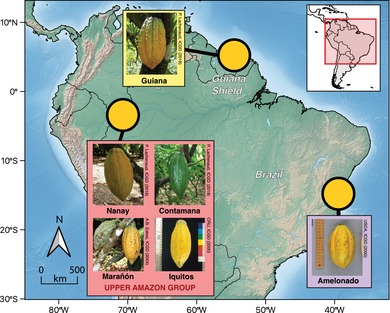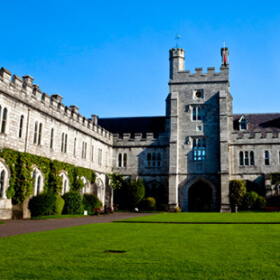Blog
Is your cacao of wild or introduced origin?

This paper uses RAD-sequencing to look for evidence of selection in populations of cacao in South America. Populations were either known to have been introduced, highly likely of wild origin or of unknown origin. We determined that the unknown Guianan population was likely of wild origin. Similar approaches could be taken to investigate the origin of any cacao population.
Cacao populations exist along a continuum from wild to naturalized and cultivated forms across the Tropical Americas, complicating efforts to distinguish genuinely wild populations from those influenced by human activity. Here, we investigate genomic diversity, population structure, and domestication signals in three groups using RAD-sequencing: Upper Amazonian populations (including Contamana, Marañón, Iquitos and Nanay), the Guiana population, and the Amelonado variety introduced into Eastern Brazil in the 18th century. The Upper Amazonian populations exhibited the highest genetic diversity and limited evidence of recent selection, reaffirming their role as the primary genetic source of cacao. The Amelonado group displayed signatures of artificial selection, including reduced genetic diversity and evidence of balancing selection, consistent with its introduction to Bahia before its later expansion to West Africa. The Guiana population showed intermediate genetic diversity and tight clustering but minimal differentiation from Upper Amazonian populations, suggesting they could represent an isolated wild lineage rather than an introduced group. These findings highlight the complexity of cacao's domestication history, shaped by multiple independent selection events and long-term human influence. Understanding this continuum is important for unraveling the species' evolutionary history for supporting conservation and breeding strategies for cacao, a crop of major economic and cultural importance.

